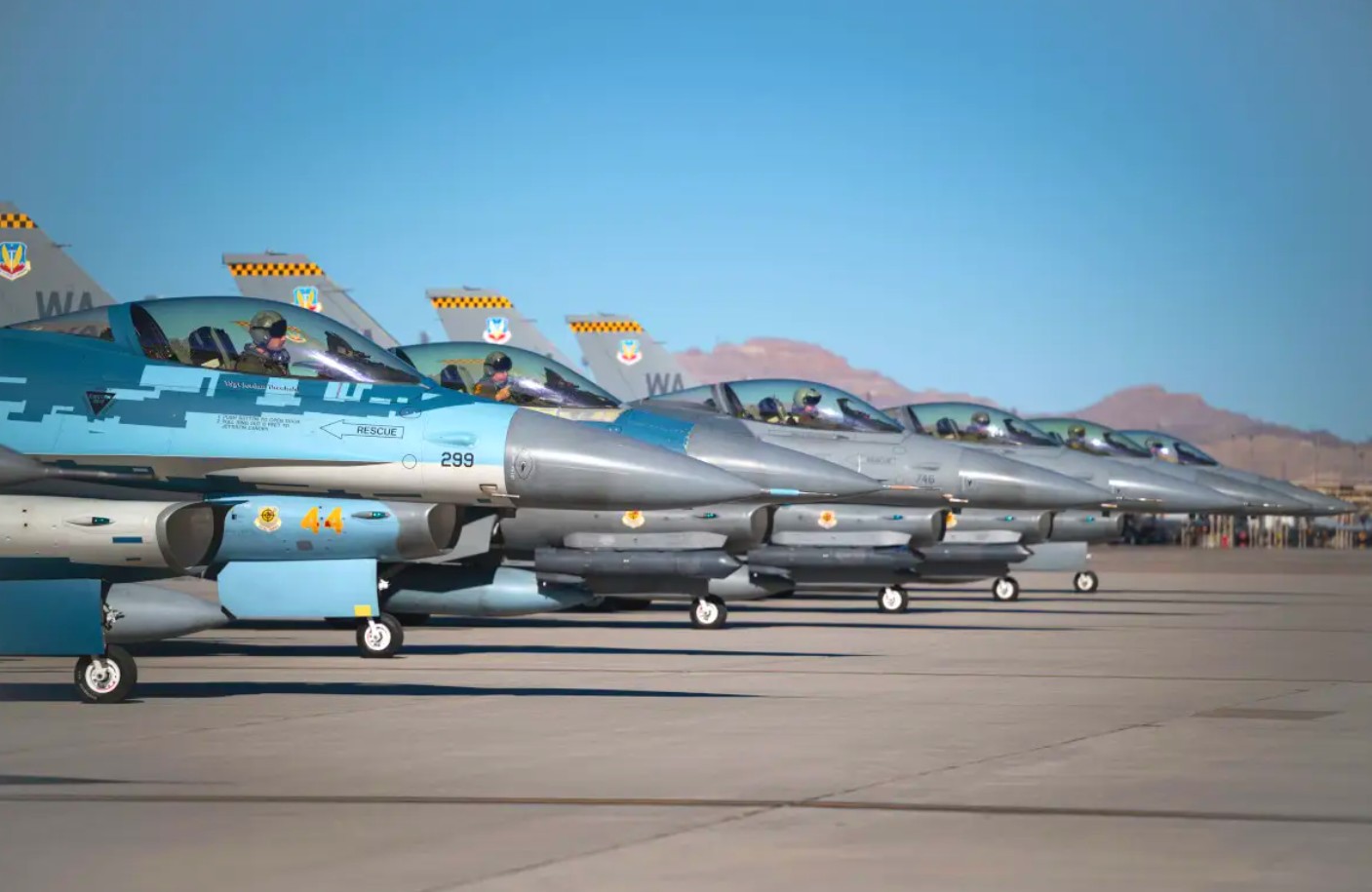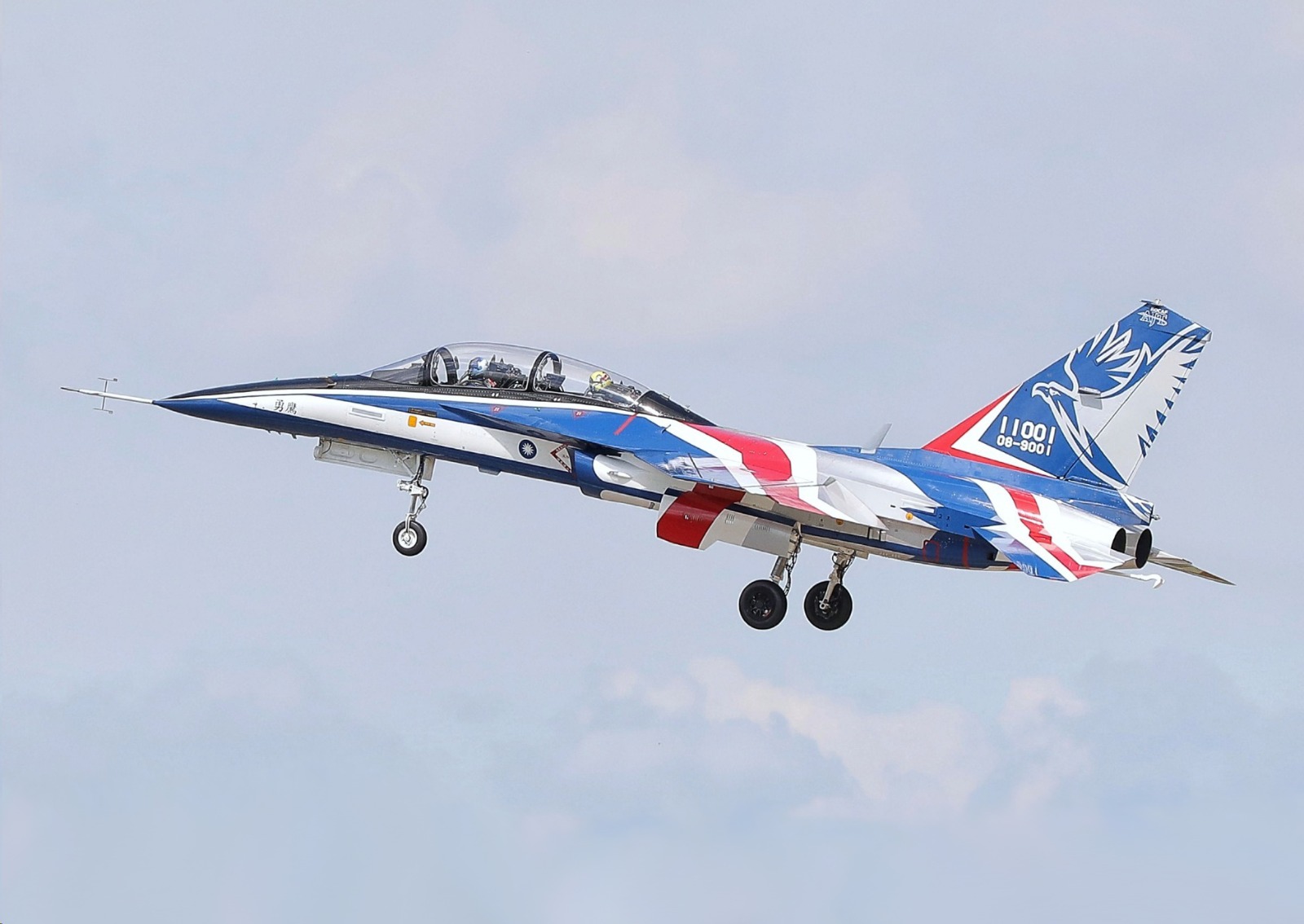To modernize its military and bridge the capability gap with China, Taiwan has decided to retire its fleet of iconic Cold War-era F-5E/F Tiger II jets. Taiwan’s domestically-built Brave Eagle trainers will replace them.
A Taiwanese military official announced on November 4 that Taiwan’s advanced trainer aircraft, the Brave Eagle, is scheduled to replace the Air Force’s outdated AT-3 and F-5 aircraft. However, the RF-5E Tigergazer reconnaissance aircraft will continue to remain in service.
Northrop Grumman describes the F-5 Tiger II aircraft as “an agile, highly maneuverable, reliable supersonic fighter, combining advanced aerodynamic design, engine performance, and low operating costs.”
The RF-5 reconnaissance variants will be kept for observation missions, collaborating with F-16Vs. At the same time, the F-5s will be removed from combat duty by the end of this year, the unknown official told the media.
Taiwan would only fully retire its RF-5 reconnaissance aircraft when it obtains its MS-110 reconnaissance pod systems and MQ-9B drones and when locally built unmanned aircraft are ready for combat operations.
The Taiwanese officials who broke the news said that the F-5s, set to be decommissioned, might be used as decoy aircraft near airport runways or transferred to training units. Another option is to put them on display like a Cold War legacy aircraft.
Terminating F-5E/F operations is an essential milestone in the Republic of China Air Force or ROCAF’s history since the service has been an ardent operator of the F-5 family for a long time, having received more than 500 aircraft in various iterations.
After the first F-5E for the ROCAF was delivered in December 1974, 66 local two-seat F-5Fs and 242 single-seat F-5Es were produced locally. Approximately 300 six-winged F-5E/F aircraft were in service by the 1980s, dominating the ROCAF’s fighter fleet.

Although the idea was floated, the ROCAF was not keen on extending the service life of the elderly F-5E/F aircraft, so the Tiger II was obliged to continue operating despite structural and availability issues.
After the Air Force acquired 150 F-16s, 60 Mirage 2000-5s, and 130 F-CK-1s in the 1990s, the F-5E/F series was demoted to the status of second-line fighters, and the aircraft were mostly removed from service as squadrons have transitioned to the newer fighters.
A few high-profile incidents also prompted concerns about the F-5’s viability and resulted in temporary grounding orders. In fact, after a fatal crash incident in November 2020, there were reports that Taiwan had decided to phase out all 46 of its aging F-5 fighter jets in about four years.
To counter an increasingly belligerent China that has vowed to invade Taiwan someday, the self-ruled island state has undertaken extensive military modernization. As part of that, the F-16s are now being upgraded to the advanced Viper variant, and the country is also exploring the option of upgrading its Mirage 2000-5 fighter fleet.
Although acquiring new capability has essentially prompted the decision to dispose of the existing outdated fighter jets, the decommissioning of these aircraft is nevertheless akin to the “end of an era” for the ROCAF. The gradual deployment of the domestically made T-5 Brave Eagle advanced jet trainer is making it possible to retire the F-5E/F fleet.
What Do We Know About Taiwan’s New T-5 Trainer?
The Republic of China Air Force (ROCAF) is currently receiving 66 T-5 aircraft, the first of which made its maiden flight in June 2020. The aircraft has been developed and produced locally by the Aerospace Industrial Development Corporation (AIDC) with a budget of T$68.6 billion (US$2.3 billion).
This is Taiwan’s first indigenously produced jet since the F-CK-1 Ching-kuo Indigenous Defence Fighter, or IDF, which debuted over thirty years ago. Both aircraft share a similar appearance and set of capabilities.
In July 2022, the ROCAF showed off its brand-new, domestically built jet trainer, highlighting its more sophisticated, combat-ready capabilities. The aircraft will replace the outdated, prone to mishaps, and current equipment. Three T-5 Brave Eagles took to the air at the Chihhang air base in Taitung on Taiwan’s east coast to showcase their capabilities to reporters.
At the time, Chang Chong-hao, the flight training officer, said that the Brave Eagle could land and take off with less runway, making it appropriate for air-to-ground and air-to-air combat training. “So it helps give the students more space to deal with unforeseen situations.”
The aircraft can land and take off using a shorter runway and be equipped with live weapons, adding more teeth to its combat capability. Taiwan’s goal of giving domestic military equipment design and manufacturing priority led to the creation of the new T-5.

The ROCAF can now train pilots for cutting-edge combat aircraft like the updated F-16V with the T-5, a specially developed LIFT aircraft. Trainee pilots can quickly learn basic flight abilities and practical fighting skills thanks to the trainer aircraft’s integrated flight training system.
The new advanced trainer jet’s flight performance was improved by refining the F-CK-1’s structure and flight characteristics. The T-5 is designed with composite materials to increase strength and decrease overall weight. The aircraft’s aerodynamic shape is optimized to produce a high angle of attack and reduced drag while enhancing flight performance.
To reduce the approach velocity and improve the aircraft’s stability at low speeds, the wing cross-section has been modified. In addition to that, the aerofoil on the T-5 jet trainer has been altered, and the rear fuselage has been reworked to lower the aircraft’s landing speed.
Moreover, the trainer’s fuel capacity is expanded by raising the separation line, which extends the flight time and range. To support attack operations, the new jet trainer can be equipped with a gun pod. It is also capable of carrying guns and bombs.
With the T-5 now making its way into the ROCAF, the flight training curriculum has been reduced from three aircraft (T-34, AT-3, and F-5) to two (T-34 and Brave Eagle) in three stages. This modification is anticipated to make combat training missions with cutting-edge fighter aircraft, such as the F-16V, more effortless.
- Contact the author at sakshi.tiwari9555 (at) gmail.com
- Follow EurAsian Times on Google News




